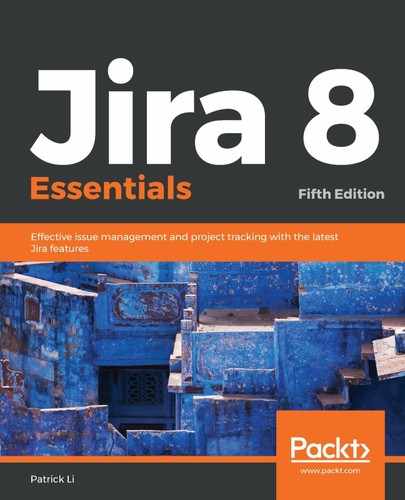With our new workflow in place, we can now create a new Termination issue and start testing our implementation. Since we need to simulate a scenario where an unauthorized user cannot transition the issue after it is created, we need to create a new user. We will look at user management and security in Chapter 9, Securing Jira. For now, we will simply add a new user to our system:
- Browse to the Jira administration console
- Select the Users management tab and click on the Users link
- Click on the Create user button to bring up the Create New User dialog
- Name the new user john.doe (John Doe)
- Set the password and email address for this new user
- Uncheck the Send Notification Email option
- Check the Jira Software option for Application access
- Click on the Create button to create the user
Now, log in to Jira as a new business user, john.doe, and create a new termination issue. After you create the issue, you will notice that you cannot execute any transitions. This is because you (john.doe) are not in the jira-administrators group. The administrator user we created in Chapter 1, Getting Started with Jira, is in the jira-administrators group, so let's log in as the administrator. Once logged in as the administrator, you will see our new transition, Conduct Exit Interview, as shown in the following screenshot:

You will also see that, if you create a new task in the HR project, the task issue will continue to use the default workflow.
With the current workflow set up, everything happens in sequential order. However, sometimes, you might need things to happen in parallel. For example, in the collecting assets step, there might be multiple assets to be collected for various teams, such as a laptop for IT and a key card for security. It will be a lot more efficient if you can perform them at the same time and be able to track them individually. One way you can do this is by creating subtasks for each asset under the issue (remember, an issue can only be assigned to one person), and assign the subtask to the relevant team such as IT and security, so they can chase up with the employee to retrieve the asset. You can then set a condition on the Done transition to make sure that all subtasks are completed before they can be executed.
This can be expanded upon to have the asset collection and exit interview as subtasks so that both can happen at the same time, and you can create different subtask issue types to differentiate them, as covered in Chapter 4, Issue Management. Your termination issue may look something like this:

